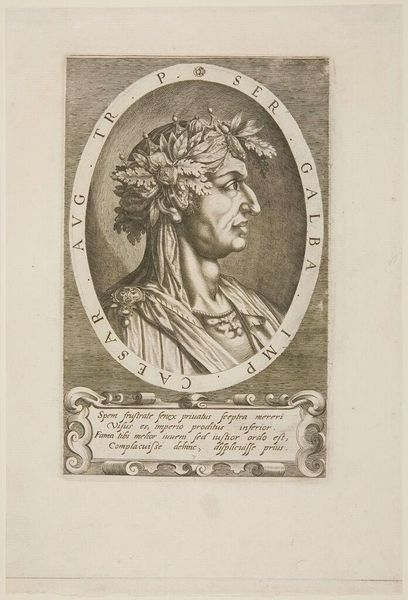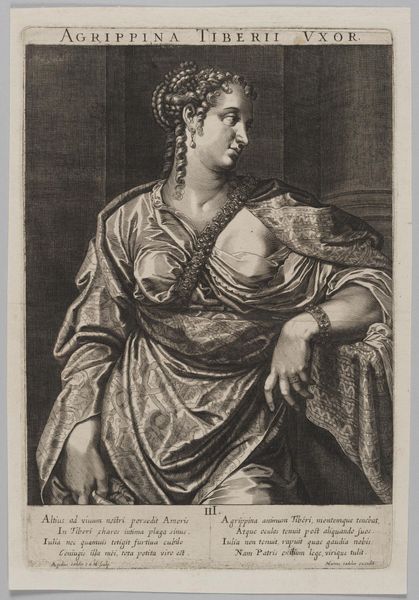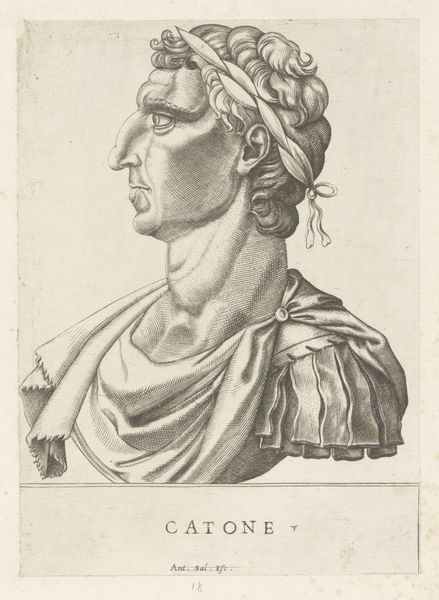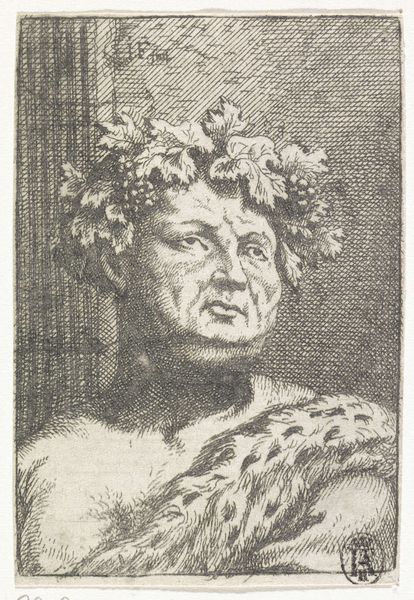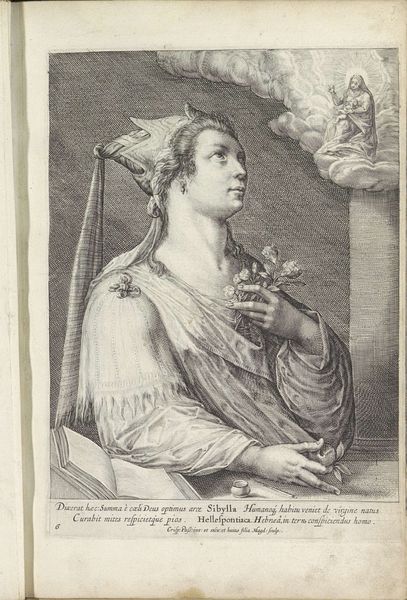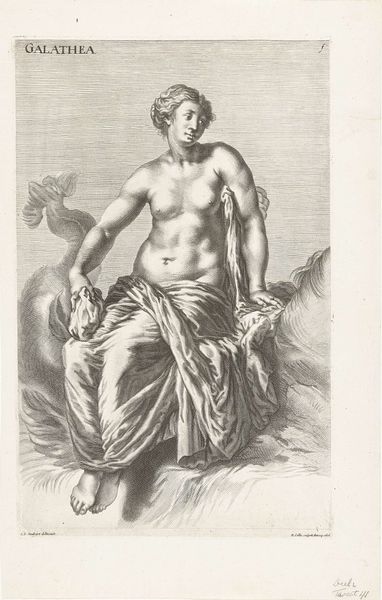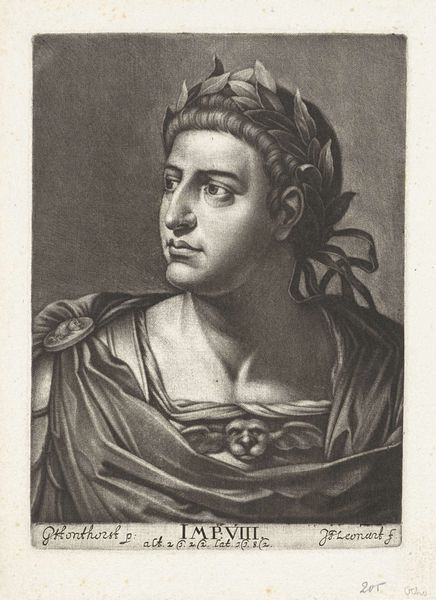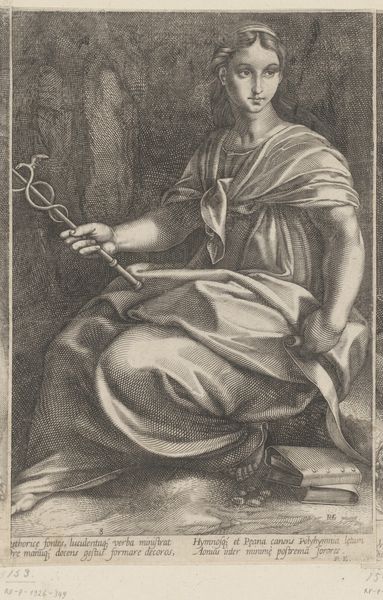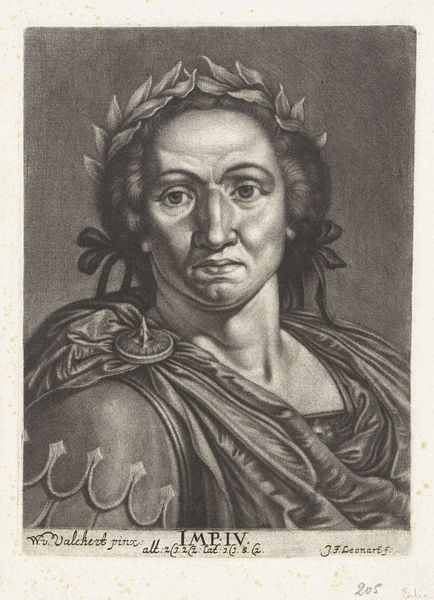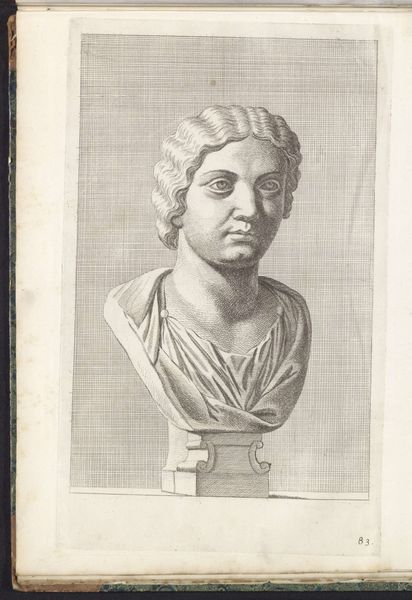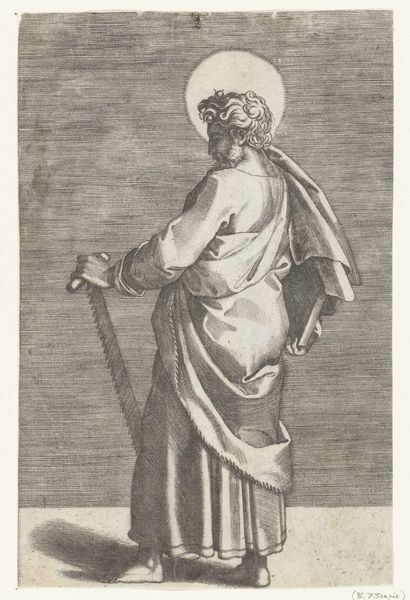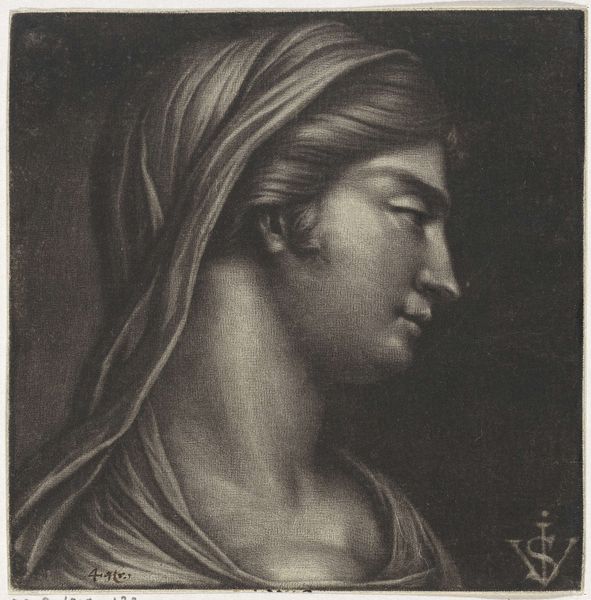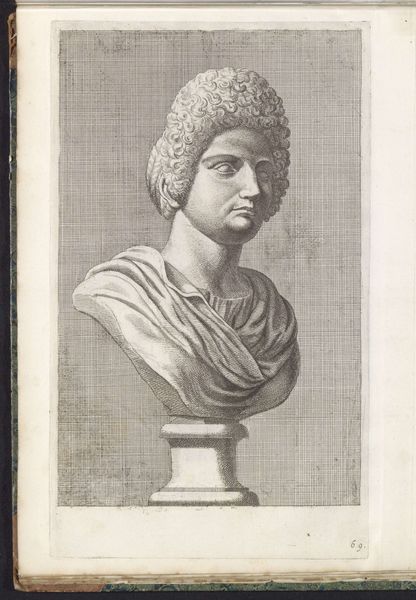
print, engraving
#
portrait
#
baroque
# print
#
classical-realism
#
history-painting
#
academic-art
#
engraving
Dimensions: height 172 mm, width 123 mm
Copyright: Rijks Museum: Open Domain
Curator: This engraving, dating back to between 1643 and 1680, is titled “Portret van Claudius I, keizer van het Romeinse Rijk,” and is attributed to Johann Friedrich Leonard. It's a compelling piece of Baroque printmaking. Editor: There’s an undeniable sternness to his profile, despite the laurel wreath and what appears to be… a baby doll? The composition feels deliberately stoic. Curator: Indeed. The sharp lines characteristic of engraving contribute to that stoicism. Consider the context: prints like this allowed for wide dissemination of imagery, shaping public perception of historical figures like Claudius. Editor: I’m drawn to the intricate rendering of his hair and the drapery; it’s fascinating how Leonard uses hatching and cross-hatching to create a sense of volume and texture, given he’s only using the graphic qualities afforded by ink on paper. The artist had very minimal material means at their disposal. Curator: Exactly, the materiality is critical here. The availability of printing presses and the engraver's skill determine the final aesthetic and its impact on society. This wasn’t some one-off masterpiece meant only for the elite, it's designed to influence opinions. Editor: And yet, that’s exactly what gives the work it’s visual power! Ignoring what that access would’ve meant historically; The balance between light and shadow, the controlled gradations within a black and white palette... Curator: But let’s not ignore that the print serves as an artifact, illustrating cultural and economic factors prevalent during its time. Who was commissioning these portraits? How did they circulate, and among whom? Understanding the networks of production and consumption brings the art to life. Editor: Agreed. But its visual elegance, the manipulation of light and form...these are equally vital to the work’s overall effect on us. Curator: I suppose there's a tension between the purely aesthetic and the historical-social context. Perhaps that tension enriches our understanding of art in general. Editor: Possibly so. And I have a feeling our listeners will ponder this image and walk away considering just that.
Comments
No comments
Be the first to comment and join the conversation on the ultimate creative platform.
